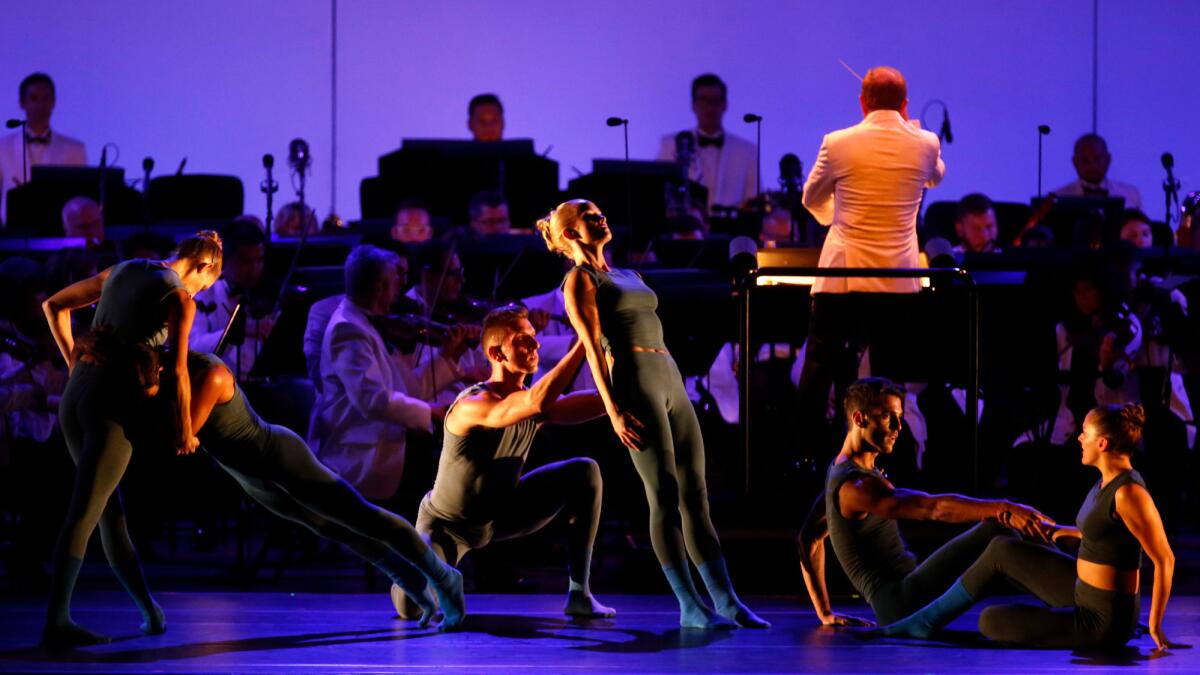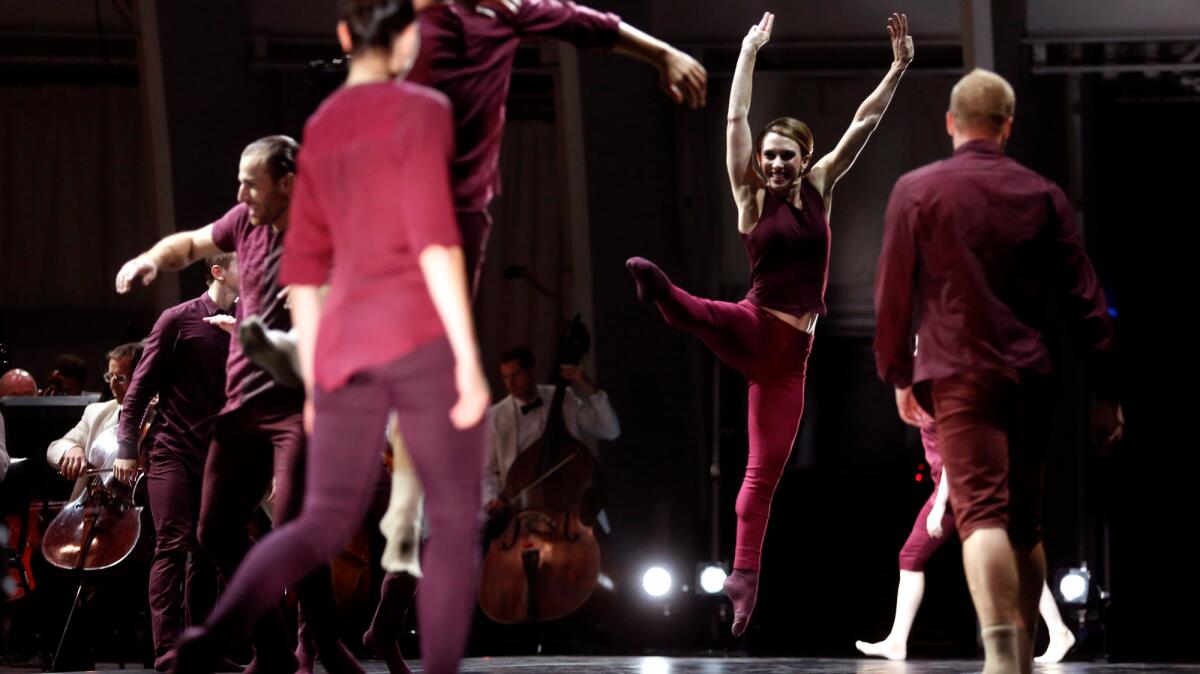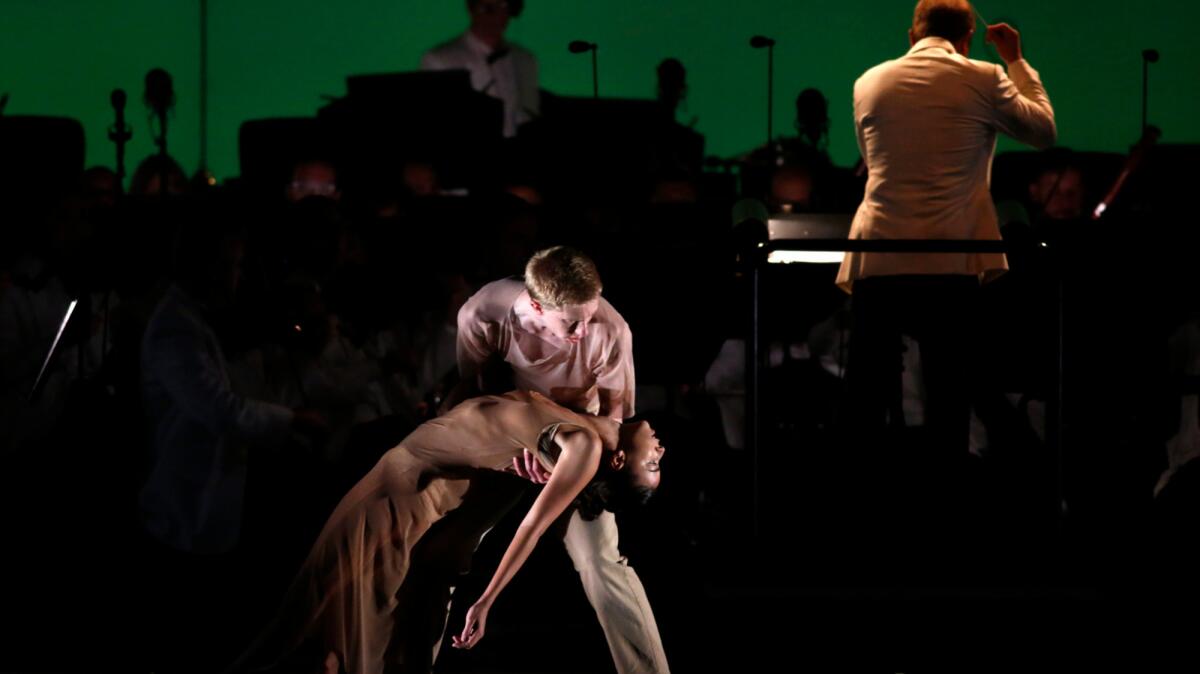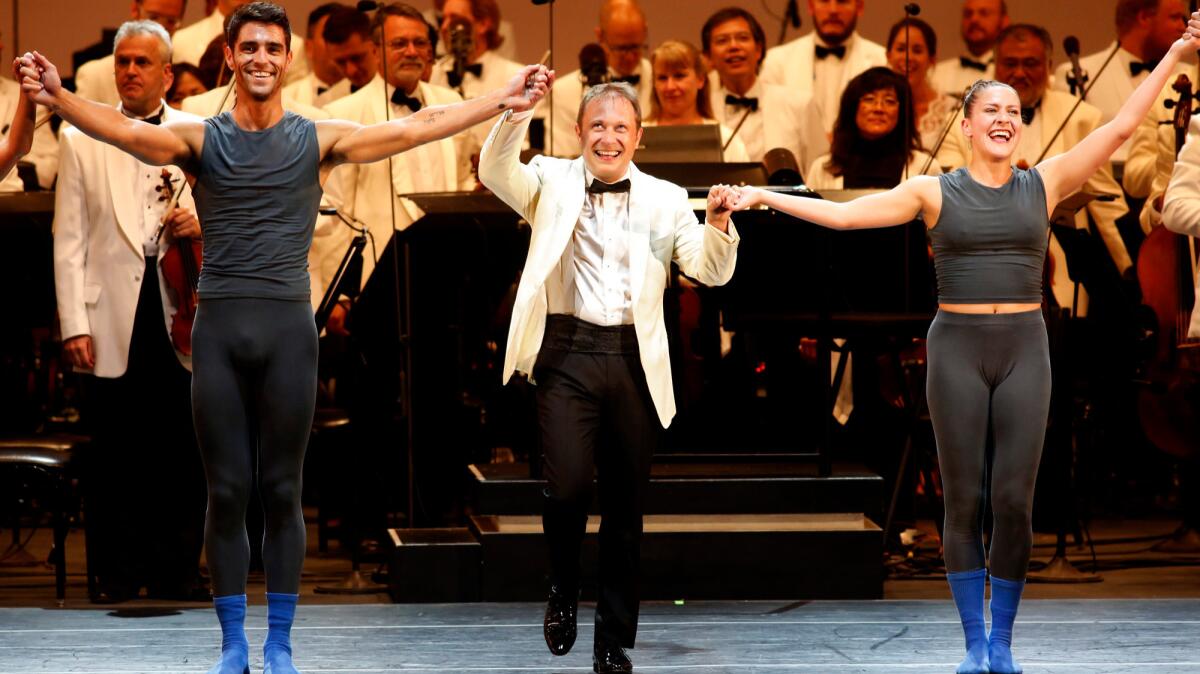Review: Hollywood Bowl show marks a breakthrough for homegrown L.A. dance troupes

The “L.A. Dances” program at the Hollywood Bowl on Thursday arguably represented a breakthrough: Up to now, some of our more established cultural institutions have largely relegated homegrown dance ensembles to off-site plazas, annexes, courtyards or, in the case of the Bowl, pre-performance guest appearances. Token exceptions only proved the rule.
That changed Thursday when the L.A. Dance Project, Bodytraffic and Ate9 performed contemporary works in front of the Los Angeles Philharmonic, and conductor Ludovic Morlot capped his duties as a considerate dance accompanist with an unusually clear and controlled interpretation of Stravinsky’s “Rite of Spring.”
Seen at the Music Center’s anniversary gala two years ago, Justin Peck’s “Helix” gave L.A. Dance Project a virtuoso showpiece rooted in the ballet vocabulary and conventional partnering but brilliantly tuned to the intricate swoop and swirl of Esa-Pekka Salonen’s score. Peck assigned six soloists a series of knotty duets that spoke more strongly about body sculpture than romance, then shattered those sculptures gymnastically before his inventive canonic gambits culminated in a mass collapse. It wasn’t as visionary as Peck’s “Murder Ballades” for the company, but it was undeniably impressive.

In “Bounce,” choreographer Gustavo Ramírez Sansano propelled 10 members of Bodytraffic through a kind of urban action painting full of unpredictable twists and surges, while Adam Schoenberg’s invigorating score kept reassuring the dancers and audience that the engulfing energy in the piece would eventually lead to a happy ending. It did, but not before zombie walks, flyaway arms, dissolving lineups and fleeting alliances (perhaps too fleeting) set the seal on the company’s high-speed expertise. If you’re seeking happy-go-lucky modernism, search no further.

Far more compelling to hear than to watch, the premiere of “Replicate, Part 2” (subtitled “Play”) featured an overwhelmingly intense score by Daniel Wohl and arid, fragmented dance clusters by Danielle Agami for Ate9. Perhaps Agami’s movement would have mattered more in an intimate studio theater, but even enlarged on the Bowl’s projection screens, the eight dancers never matched or complemented or formed a telling contrast to the weight and power of Wohl’s music. Indeed much of the time, their contribution seemed less like dancing than a throwback to the task-driven, pantomimic physical theater of the 1970s.
If Morlot and the L.A. Phil gave every mournful or snarling passage in “Replicate, Part 2” a startling immediacy, the danceless “Rite of Spring” concentrated on the architecture of the music, letting us appreciate the inner voices in the early passages and the inexorable buildup later on. The fanfare-like brass attacks in “The Dance of the Earth” sounded rigorously subdued and, for all its structural clarity, the finale remained too restrained for catharsis.
“Bounce” and the orchestral version of “Replicate, Part 2” were commissioned by the L.A. Phil, and the evening’s pleasures were enhanced by Trevor Stirlin Burk’s lighting designs. Obviously, choreography at the Bowl involves deploying dancers in a stretched-out line in front of the orchestra. But on Thursday the inevitable compromises seemed minor compared to the opportunity for audience-building and for affirming the accomplishments of what is surely our city’s most undersung art form.

Follow The Times’ arts team @culturemonster.
More to Read
The biggest entertainment stories
Get our big stories about Hollywood, film, television, music, arts, culture and more right in your inbox as soon as they publish.
You may occasionally receive promotional content from the Los Angeles Times.










